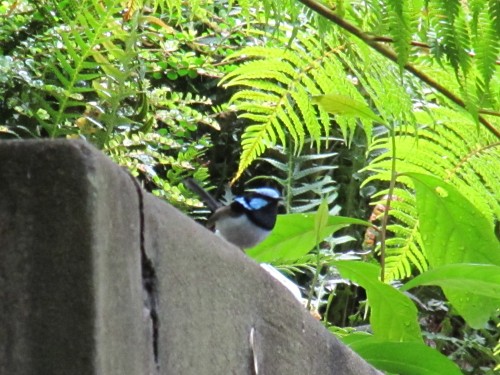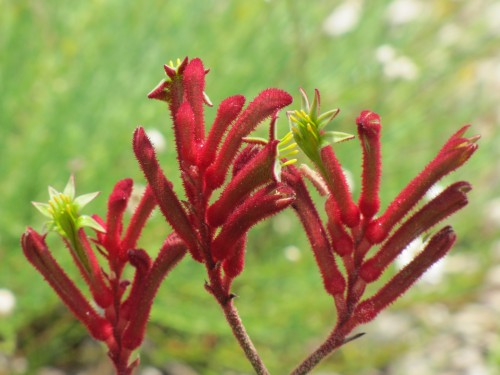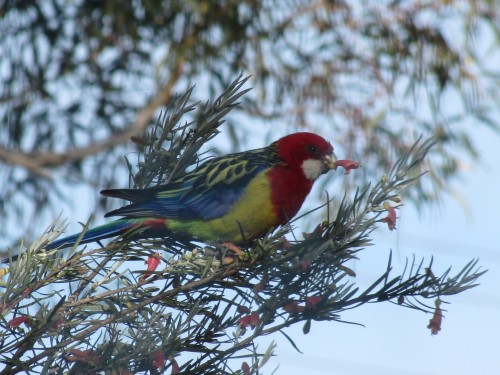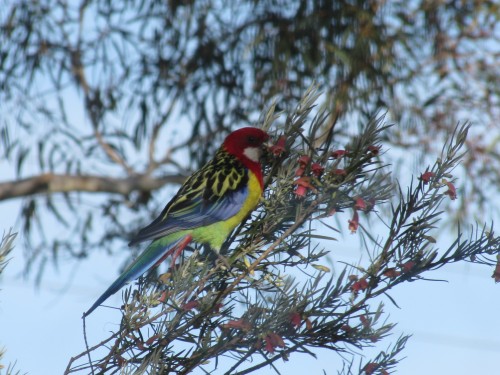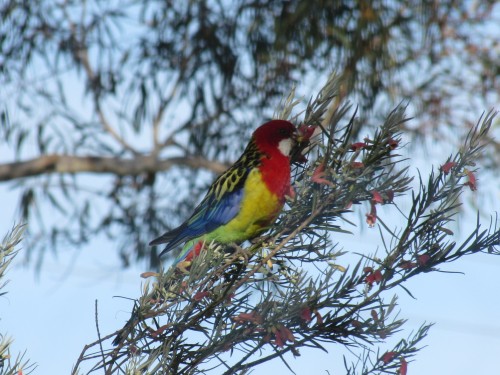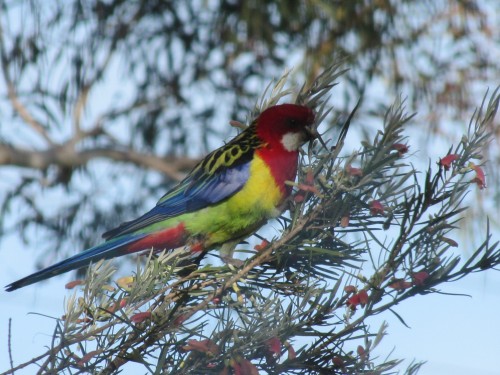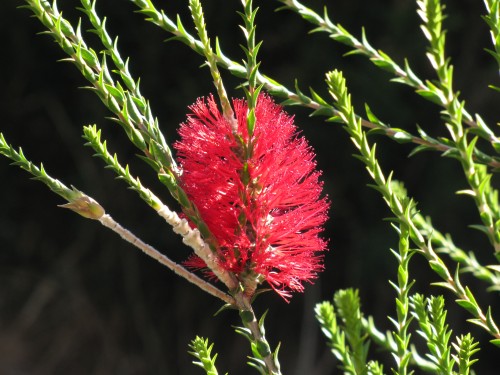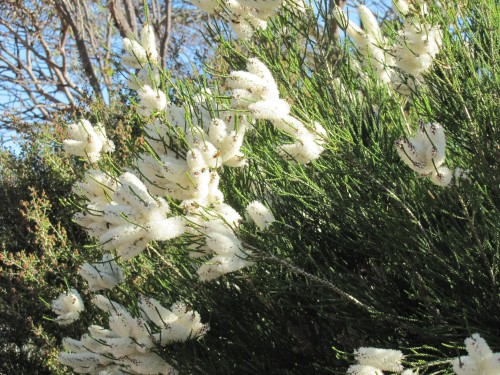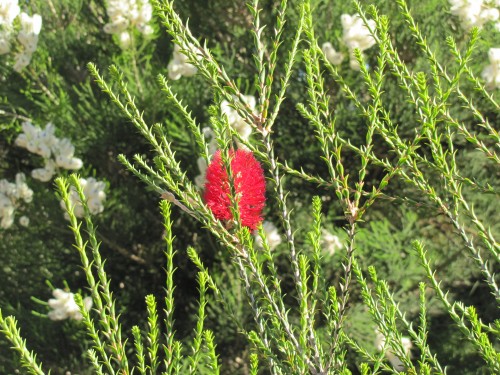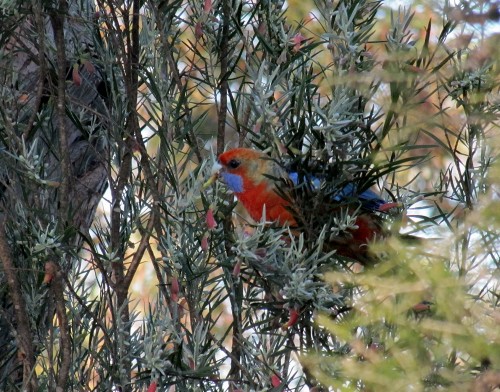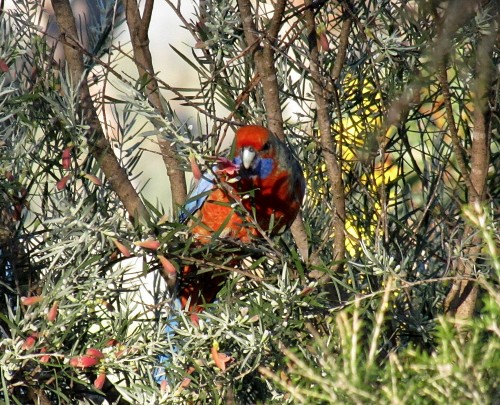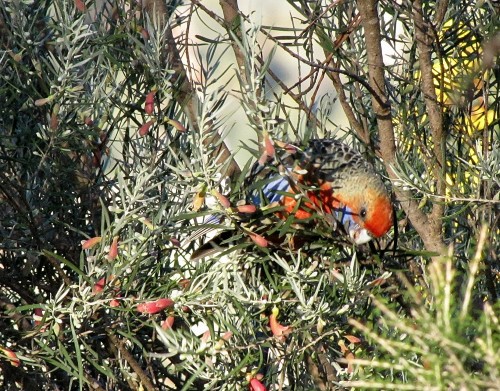A visit to the Australian Botanic Gardens Mt Annan
On our recent trip to visit family in Sydney we were determined to visit the Australian Botanic Gardens Mt Annan at Campbelltown in the south eastern part of greater Sydney. In recent visits to our son it has never worked out to take a day trip to these gardens. In fact, our last – and only visit – was in April 2000. Our memories of that visit were getting very hazy, though I do remember seeing Double-barred finches there – my one and only sighting of this species.
The Australian Botanic Gardens Mt Annan are part of the Royal Botanic Gardens Sydney and are run by the same Trust. The gardens are 416 hectares in size and include hills, fern gullies and creeks, and lakes. One section even boasts a decent mountain bike track. About 4000 Australian plants are on display in these gardens. Unfortunately, very few were flowering at the time of our visit. We could only imagine what it would look like in the spring. (Note to self: organise a visit in spring!)
Despite the lack of flowers I was still pleased to record about 40 bird species during our stay. One of them was a shy Superb Fairy-wren shown above. He was skulking around in the undergrowth in the fern gully, just where the light was too poor for photos. His brief appearance in a lighter spot was not quite long enough for a good photo.
Below I’ve shown one of the plants in flower on show during our visit.
I will write more about the birds I saw in coming days.
Mallee Ringneck parrots feeding young
We have a family of 6 to 8 Mallee Ringneck parrots resident in our garden. We see them every day and they love feeding on the flowers of plants like the Eremophila shown in the photo above. They are also partial to our pears – before they are fully ripe. (Last summer we managed to foil them by draping bird netting over the trees. Yes!)
Quite often we have seen several of the parrots sitting at the entrance of a large hollow in one of our trees. We also see them entering and leaving this hollow. We’ve suspected that they have been nesting in this hollow, but we lacked definite proof until earlier this week.
My wife, who runs a small nursery growing Australian native plants (click to visit), was working in the nursery when she noticed a ringneck feeding a young one in the tree near her. So we can only assume that they have recently used the hollow (or another one nearby) to raise a family.
The Mallee Ringneck is a race of the Australian Ringneck.
Now the Eastern Rosella is back home
For almost two years now we have had an Eastern Rosella occasionally visit our garden and patch of mallee scrub. During some weeks we see it several times a day, every day. On other occasions it may only visit once and then not again for a week or two. It is an unusual visitor for a number of reasons.
- Eastern Rosellas are not normally found in the Murray Bridge region. They are common in the eastern states and even in the south east of South Australia. They have been introduced to the Adelaide region. All I can assume is that this species is extending its range or this one bird has escaped from someone’s aviary – or has been released.
- The other unusual matter relates to its behaviour: it is regularly seen in the company of a Mallee Ringneck. We have up to a dozen ringnecks around at any one time, but most of them do not tolerate this “interloper” and will vigorously chase it off. It keeps returning; such persistence.
For the last month we hadn’t seen the rosella, but earlier this week it reappeared, again in the company of a ringneck and again being harassed by the other ringnecks. On Wednesday it posed nicely for my camera while eating the flowers of one of our Eremophila youngii bushes.
Further reading:
- Now we have two Eastern Rosellas
- Adelaide Rosellas in our garden
- Mallee Ringneck Parrot
- Parrots eating our flowers
- Eremophilas – articles about Eremophilas on my wife’s site.
Attracting birds to your garden
No bird photos to show today, but something just as beautiful. I recently took these photos of some native flowers in our garden. It made me think about ways of attracting birds to your garden. I’ve written articles on this topic before, including this one.
Planting Australian native plants is the best way of attracting – and keeping – birds in your garden. This rule can be applied in most parts of the world; find out what local plant species grow in your area and add them to your garden.
In Australian gardens, plants like grevilleas, hakeas and banksias will not only look delightful when flowering, the honeyeaters, finches and many other species of birds will love them – and you. You can learn more about Australian native plants on my wife’s site here.
Providing clean drinking water is another sure way of attracting birds. In our hot, dry summers the birds will flock to a bird bath, dish or bowl put out for them. Place the water containers near a window or glass door so you can watch the parade of birds without scaring them.
One more tip: keep your cat inside. They are hunters and have no place in the Australian environment.
Adelaide Rosellas in our garden
In our garden and five acre block of land on the outskirts of Murray Bridge in South Australia we have many different species of birds – over 100 in fact. Of those that are resident or occasional visitors we have a good range of parrots.
Perhaps the most abundant would be the Galah, a very common species in the district with flocks numbering in the many hundreds. Another common species is the Little Corella but this is usually a species which only flies overhead, also in large numbers. Other parrots present in smaller numbers include Rainbow Lorikeets, Purple-crowned Lorikeets and Sulphur-crested Cockatoos. Mallee Ringnecks are a resident breeding species. One individual keeps company with an Eastern Rosella, a species not normally present around here (I suspect it is a cage escape.)
Every month or so we have a short visit from several Adelaide Rosellas, shown in today’s photos. This is a sub-species of the Crimson Rosella of the eastern states. The Crimson Rosella is a much deeper red colour, while the Adelaide Rosella is more of an orange colour. In the northern parts of its range in South Australia (eg the lower Flinders Ranges) the orange colour can be quite washed out.
The birds which came to visit us last week are much brighter red than most Adelaide Rosellas, leading me to think that they may be moving north from the South East districts of South Australia where the more brightly coloured birds occur. Just a theory. On the other hand, I don’t have to travel too many kilometres west to see the typically washed out orange rosellas common in the Adelaide region.
